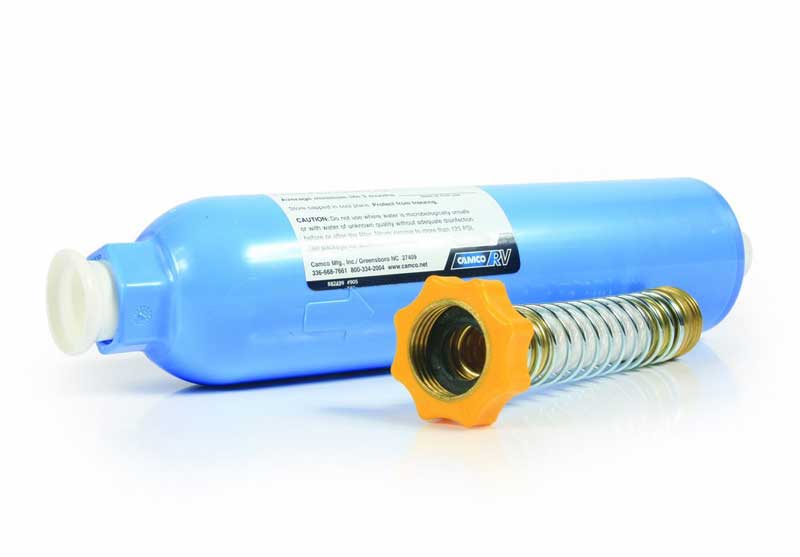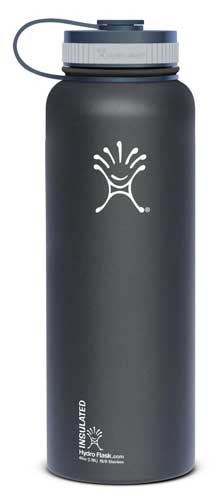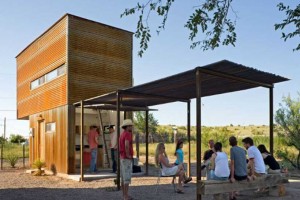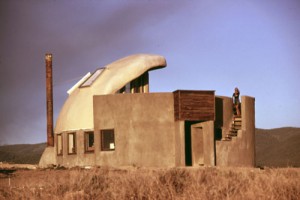I may get commissions for purchases made through links in this post.
Dry camping, aka boondocking, requires for your RV or van to be self-sufficient as it involves staying in places without hookups. Whether you’re parked in nature, at parking lots, or at other urban locations, having sufficient water, electricity, and other supplies available is essential to successfully living off the beaten track.
Boondocking, or independent parking is essentially staying overnight outside camp sites with amenities such as water, electricity propane, gas, and sewer.
In order to be self-reliant without the amenities that campgrounds, RV parks etc offer you will need to be well-prepared and well-equipped. Read our wild camping equipment list for tips on which dry camping gear you need to make this offbeat way of camping a reality.

The following gadgets will help you sustain your your adventurous spirit. The better outfitted you are, the more you are able to live your nomadic life on your own terms.
16 Must Haves for Dry Camping / Off-Grid RV Living
1. Solar power setup
RV solar power is essential when you are residing out in the boonies and there, obviously, are no electrical hookups.
A solar power setup not only provides a great power alternative to noisy, smelly, and costly RV generators. It allows you the freedom to have electricity at any given moment while also saving you money in the long-run. For some free campers having a backup generator is a must for living off-the-cord.
Solar panel setup options
To set up a battery charging system that uses solar energy, you will need to install solar panels on your RV or van, which;
- can be mounted on the roof
- or you can opt for a portable solar panel kit (often in the form of an easel-type frame).
The latter is more flexible in catching scarce and lower angled sun rays in winter time. Some RV’ers build their own 360 degree rotatable, roof-mounted solar setup to be able to optimally catch solar energy.

In addition to the panels, you will need a charge controller which will take the energy from the solar panels and distribute it to the batteries.
You will also need a well-sized battery bank. More gel batteries means more power storage capacity which can be crucial when parked in the shade or when camping on consecutive cloudy days.
- Battery bank options include lithium batteries which are the most expensive, or the more affordable, but still high quality lead-acid leisure batteries such as VMAX Solar deep cycle batteries.
Then there’s 12v and 6v deep cycle leisure batteries to choose from. Here’s a very helpful guide to leisure batteries.
A (bigger) inverter, and a battery cut off switch are helpful too.
To determine the right solar power setup for you will depend on how much energy you use and which appliances you like to run, which requires some researching.
The exact requirements of your setup entirely depends on how much and what kind of appliances you want to run.
2. Inverter
If you are boondocking a pure sine wave inverter is essential to powering up your #vanlife. It converts 12v power from leisure batteries to 120v power. Rigs usually come with a shore power cable to run AC devices, but to use solar power an inverter is almost essential.
RV inverters come in two types, pure sine wave and modified sine wave inverters.
An inverter’s purpose is to get the most of your battery power and allows you to convert the 12 Volt DC power from your batteries so that it works for your electronics that use 120 Volt AC Power – generally electronics like a TV or computer.
An inverter is only required if you need to convert DC battery power to AC household power to run devices like microwaves, TV’s, tool chargers and other electronics.
An inverter in theory isn’t essential but you will probably want one because it beats the alternative which is to run all of your electronic devices off of 12 Volt power, which involves the extreme hassle of requiring a separate 12 Volt power charger and 12V adapter cables for powering all of your 230V appliances.

An inverter provides convenient, green (emmision-free), quiet, constant electricity which makes an inverter a must-have for serious boondockers.
Be aware that every van / RV is different so do your research and measure before purchasing any solar/electrical systems.
A popular and poweful sine wave inverter for RV’s is the Go Power! GP-SW3000-12 3000-Watt Pure Sine Wave Inverter.
3. Cell phone signal booster

Especially when you’re dry camping out in the sticks, ensuring that you have a good signal can be challenging.
To ensure that you can connect and communicate with loved ones back home or make a call in case of an emergency, it is important that you keep a cellphone signal booster handy to make things easier.
Using one can boost your phone’s reception from 3G to 4G and raise the amount of bars to use your phone to its fullest potential. This can prevent any annoying dropped and missed calls and can even be the turning point in a life threatening situation.
Essential when it comes to emergency situations, a booster can be a difference between life and death, between no service without, and 1 bar with the booster. A highly recommended signal booster is the Wilson Mobile 4G Vehicle Kit
When you purchase a cellphone signal booster don’t forget to register it with your wireless provider; FCC law requires that you do so. You will also have to ensure that you are installing it using approved antennas and cables at a specified distance away from each person using it.
4. Mobile router, personal hotspot, or mifi

Do you rely on internet access for working while on the road or for supporting your traveling in general? Or perhaps it’s just a necessity to be able to keep in touch with the homefront?
If so, you will want the most reliable mobile internet connection you can get. There are various options.
Some cons to tethering to a smartphone’s connection include:
- the large usage of data,
- the extra carrier costs associated with tethering,
- no router/firewall security,
- and no ability to take advantage of an existing free Wi-Fi connection.
The benefits of a mobile hotspot
A portable mobile hotspot on the other hand, allows you to use an ethernet cable to create a personal Wi-Fi spot without using a 3G or 4G data plan, includes a 4000 mAh battery to charge devices, and a full router/firewall protection (which is essential when surfing the web).
In addition to all of these benefits, you will generally have a faster and more reliable connection using a mobile hotspot.
Although 3G or 4G smartphones have the ability to tether and provide wireless connectivity, they’re generally more problematic than using a portable router.
Read this excellent ‘on the go guide’ on RV internet and mobile wifi for more info.
High-end mobile routers incorporate a built-in cellular modem that eliminates the need for tethering.
When purchasing one, consider speed, 3G, 4G, and battery life. A well-reviewed option is the HooHoo wireless travel router.
5. Propane heater

Embarking on a off the cord living adventure won’t be complete without the addition of a good propane heater. Because you never know where you’ll end up and when it might be cold it’s best to have a backup heating source.
A typical furnace heater is about 70% efficient, meaning that the remaining 30% of the propane used to power it is wasted. Using a RV’s furnace heater will heat the entire rig, which is wasteful if you occupy only a small area of it.
This causes you to lose time, and money, trying to find more propane to buy. To make matters worse, a furnace can be noisy and disruptive to you and your neighbors.
Overall, keeping a propane heater handy will save you a lot of battery power, time, and money when compared to using the rig’s big furnace heater.
The pinnacle among boondockers, stealth van campers and other free folk is the Mr. Heater Buddy propane heater.
Additional disadvantages of using the conventional ducted propane furnace include:
Ducted furnaces employ a 12v. fan to circulate hot air. These fans draw typcially about 5 amps to12 amps from the battery. During cold nights this fan may run for many hours on end, risking it will completely discharge a battery.
7. Leveling Blocks and Jacks
Finding a level site in the middle of nowhere is rare so keeping leveling blocks and jacks with you can help even things out in order for the fridge and freezer to run properly.
There are several types of leveling blocks, but it is important when choosing one to ensure that it is high-quality.
Many of them end up splitting in half or breaking because they’re made of weak material. To prevent this, try purchasing some sturdy plastic leveling blocks, like Lynx leveling blocks that help support the RV wheels.

Tip: you can use pressure treated wooden blocks underneath the leveling jacks to help prevent them from sinking into the ground. This is a cheap solution, but most importantly does the trick.
8. Level tool
Besides leveling blocks and jacks you’ll need to figure out if your RV is actually level. A simple and cheap circle bubble level, more often known as a spirit level, can get the job done and won’t break the bank.
You can choose from a variety of different bubble levels made out of plastic, aluminum, wood, or cast iron. Regardless of the material, it is best to use one that can be adhered to the side of the RV so that you may easily check to see if it is level.
- Reading the bubble level is easy. Simply check to see if the bubble is centered between the two lines on the spirit tube to determine the even level of the RV.
A handy circle bubble level such as the Bull’s eye bubble level let’s you easily check if you’re level and costs only a few bucks.

9. Portable water containers / RV water bladder
Conserving water is essential when boondocking as water supply is often is the weakest link.
it’s not for no reason that boondocking is also called dry camping.
Especially during dispersed camping, the ability to bring water to the RV instead of the RV to a water hookup is essential.
Most dry campers agree that using portable water containers and/or bladders can help you boondock for a longer period of time because you can add to your RV’s fresh water capacity.
A specific additional fresh water storage solution is an Aquaroll. It allows you to get water to your rig when it’s not possible to take the rig to a tap. The key issue with an Aquaroll is where to store it. It can be stored on the roof, preferably in a top box to shield it from road dirt.
Whether you use jugs or other containers, various filling methods exist:
- pull the settee off the tank, take off a round inspection cover and pour directly into the tank.
- use a funnel and a tube and pour it in to the normal water filler, this requires lifting the whole 25kilos!
- use a 12v pump with a hose to transfer water into the tank from the Aquaroll/container.
Look for containers that are made from rigid, BPA free plastic. Some come with a built in pour spout which makes adding water to the tank much easier.
A popular fresh water storage bladder to transport water to your mobile abode is the 30 gallon Aquatank 2 Water Storage Bladder.

10. Water saving faucet aereators and showerhead
Adding more fresh water doesn’t mean you can be careless with how you use it. Conserving it is key to fulfilling your off the beaten path camping experience.
For most boondockers the #1 limiting factor is fresh water.
Installing low-flow water-saving faucet aerators and shower heads makes for effortless water saving. You can save up to 50% water and get better water pressure than without these nifty, inexpensive and easily installed gadgets.
The Oxygenics showerhead even uses up to 70% less water than a traditional shower head by mixing in a burst of air in with the water flow. A genuine must-have for prolonged free camping.
Just imagine, the average western person goes through 123 gallons a day at home; needless to say that as an RV camper you should use significantly less.
Minimizing toilet flushes, wiping dishes before you wash them, sanitizing your hands, and reusing your gray water can conserve water and maximize your usage of your portable water container.

Additional benefit: Heating water will be less expensive because less energy will be used to heat the water in your shower. This boondocking equipment allows you to stay longer out in the boonies, keep more money in your pocket while also being environmentally friendly.
11. Water filters
Another item that belongs to the wild camping equipment list are water filters. Traveling to different locations involves not knowing about the local tap water quality (or not having access to tap water at all).
Different types of filters from charcoal to inline sediment filters exist to keep the fresh water supply flowing aplenty.
- basic exterior filters connected to the fresh water hose that filter out sediments as well as keep bad taste and foul odor from entering the RV water tank. A well-reviewed choice is the Camco 40043 TastePURE Water Filter. This product removes parasitic cysts while also improving its taste and odor.
- portable water filters with which you can scoop up water from any clear water source in order to quickly make safe drinking water (only filter for bacteria and not for taste).
- under-the-sink filters are especially convenient because it allows you to drink the water straight from the faucet. Reduce bad taste, odors, chlorine and sediment.
Whichever filter you choose it is best to only filter the water you need to use as it is the mosteconomical use of the filter.

12. LED lighting
This is a no-brainer as installing LED lights as a replacement for traditional bulbs will reduce your battery drain up to 90%.
Another benefit to using LED lighting is that it stays cool to the touch. No more burning yourself when switching your lighting.
While the initial purchase of LED lighting may cost quite a bit more you will save in the long-run through your lower electricity usage. If you really want to get a bang for your buck, buy LED lights by bulk on eBay from reputable sellers. Or see the Amazon LED lighting bestsellers.
Color temperature
- Consider color temperature before buying LED lighting. A typical RV bulb is 3000K or “warm white”. Daylight is 5500K.
- Most RV-ers consider values somewhere in the middle, at 4000K to be most pleasant. This temperature is also called “natural white”.

A typical 27’ travel trailer with a slide out and a few bunk beds will use about 20 or more incandescent bulbs. This equals to about 20 amps of DC power; that is enough to kill a single 12 Volt battery in just a few hours.
13. Solar clip-on lamps, and flashlights
When you’re camping out in the hinterlands on a dark, cloudy night you can’t see jack. Exploring things outside of your RV, having to do repairs, or just get something from the garage, can get problematic after dusk.
Using solar clip-on lamps makes it easy to light up areas on-the-go on pitch dark nights. To prevent any mishaps when walking around at night, wear a high quality battery powered headlamp or use a high-end flashlight to help you see where you are going.
Also very handy for when you forgot where you left your flashlight again, which, trust me, is bound to happen.
Solar powered string lights are popular because of their versatility, they can be hung under the awning, installed inside, mounted under the RV itself and on other locations to increase visibility and safety.
14. Composting toilet

Especially for fulltimers goes, the longer you can go without the luxuries of being connected to power, water, etc, the longer you can stay out in ‘the wild’.
If you want to stretch your self-reliant existence, a composting toilet is must-have RV equipment. It will allow you to extend your free campoing by days (if not more).
Additional benefits include eco-friendlyness, no water use, and no more messy black tank hose emptying. This means you don’t need your black tank anymore so you can combine it with the grey tank, increasing grew water storage.
A popular composting toilet for RVs, claimed to allow you to go up to 6 weeks between dumps, is the Nature’s Head Dry Composting Toilet.
15. A safe
You will always be traveling with valuables, and although it’s wise to bring this down to a minimum it’s also smart to consider installing a (fire) safe to keep your cash, credit cards, or jewelry safe and bolt it down.
You can get laptop sized digital motorhome safes too. More modern rigs often have floor safes permanently mounted under the bed or in the closet.
Keep in mind that an aftermarket floor safe is only as secure as its installation.

Tip: To reduce the risk of losing valuables during a break-in, consider making secret compartments or a ‘dummy’ wall. Make it appear to the casual observer like a fixed wall, that in fact can be removed to store valuables such as cash, jewelry and laptops behind.
16. High quality (handheld) vacuum
Even if you employ a no shoes policy, RV floors get dirty quickly and not being on campgrounds means having no access to campground public vacuum installations. You’re more dependent on your own cleaning tools. Newer RV’s often have built-in, central vacuums but these are generally far from efficient.
A high-end, powerful handheld vacuum cleaner is essential free camping equipment in order to get rid of dust, dirt, debris, and sand. Not to mention dog or cat hairs, if you’ve four-footed fellow travelers aboard.
Features a high quality handheld vacuum should have include: an easy to empty canister, a long battery life, and a washable filter that prevents you from buying refill filters.
Cleaning up your rig is no easy feat if you're solely relying on a mop, (collapsible) broom, and dustpan. Although having these items in addition to your vacuum cleaner can help keep your RV home clean and comfortable.
Which is the best vacuum for an RV depends on your personal situation. The Black + Decker Cordless Dust Buster Hand Vac is a well-reviewed option for the simple chores. Large rigs may need a larger vac.
Non-Essential Dry Camping Gear:
equipment to extend your self-reliant trips
The following gadgets are not definitely essential for successful dry camping but can certainly help you stay longer outside the grid of campsites and trailer parks.
Solar oven

Using the sun’s heat to cook can save you a lot of propane and or electricity, especially when you’re staying in areas with sunny climates.
Even though this one isn’t a necessity, cooking outdoors using the power of the sun adds a whole lot of romantic charm to your self-sufficient adventures.
Besides harvesting solar rays to cook your food there’s also the benefit of keeping heat out of the RV, which in turn can save energy used for operating fans or the air conditioning.
An easy to use, high quality solar oven is the All American Sun Oven.
Thermal cooker / Thermos Food Jar

A thermal cooker offers a convenient way to save propane or electricity. While this item may not be considered essential either, having one of these guys on board can significantly lower your energy use. You only need to heat it up on the stove for a short while and then the device does the rest.
Using a thermal cooker allows you to create and enjoy slow cooker style meals without abundant propane use.
Examples of quick and easy foods you can enjoy on-the-go include canned or homemade soups, sauces, oatmeal, and sauce based meals like meatloaf.
An added benefit to using a thermal cooker is the ease of use. Simply pop in the ingredients into the thermal cooker, leave it and forget it for approximately 6 hours, and wait for it to ring.
Insulated bottle

This flask works wonders in keeping cold beverages cold and hot food hot. You’re gonna thank yourself for bringing a Hydro Flask insulated bottle. Fill it up with filtered drinking water in the morning, before the searing heat of the summer afternoon warms up your water storage.
Something about safety
Safety gadgets: locks
Many anti-burglary products for RV’s and vans exist such as alarms, deadbolt locks, locks that go over the kingpin, motion detecting lights and more.
One way to safeguard yourself from unwanted visitors is to put a lock over the kingpin. While you can use either a padlock or cylinder lock, using a cylinder lock is often recommended because it has an extra locking mechanism that keeps it in place, with some even having a special key that can’t be copied.
In most cases, securing your RV is a small price to pay for the peace of mind you receive.
However, many seasoned motorhome travelers agree that when it comes to locks there’s one crucial caveat; when thugs want to enter your van or RV they will. This is especially the case for older (classic) RVs which are easier to break in.
Lots of security makes it look as if your rig is worth breaking into, as a result the damage done may be very costly.
The more locks you have the more damage they may inflict on your rig. Many RV’ers and van dwellers prefer a broken doorlock on their door over a smashed window or rooflight. Thieves will go for the weakest point, potentially causing a lot more damage in the process
Consider if you rather have the iPad stolen or your van severely damaged.
Security devices: motion detector lights
Many RV and van owners enjoy the security that comes with motion detector lights. It’s a small price to pay for the peace of mind you receive. If you are camping in the middle of nowhere, or even when your RV is parked on a campground, it can get pretty darn dark at night.
Motion detecting lights can also help scare off thieves especially if you’re in a remote area with little light. This can give you a much needed warning to protect yourself from intruders.
What do you think? Which dry camping RV items can’t you do without?
Share your experiences below.
Featured image, Duncan Rawlinson
























I never knew going out in the wild can be so luxurious…amazing!
We are new RVs and are kitting out our 1985 Sunrader right now and this has been a huge help…one of the best lists I’ve seen. Thank you!
Glad to be of help. Love those vintage RV’s. I live in a 1991 Hymer. Happy RVing!
Zeker, wat een geweldige prachtig website en verhelderend berichten, ik zeker zal website Heeft u een awsome dag!
Hey everyone!! Check out: LADDER GADGET This is absolutely the newest must-have gadget for boondocking, especially in the desert or on the beach.
Go to: http://www.laddergadget.com or just Google “laddergadget” and watch the video!
This is a great help, thank you for the awesome info.